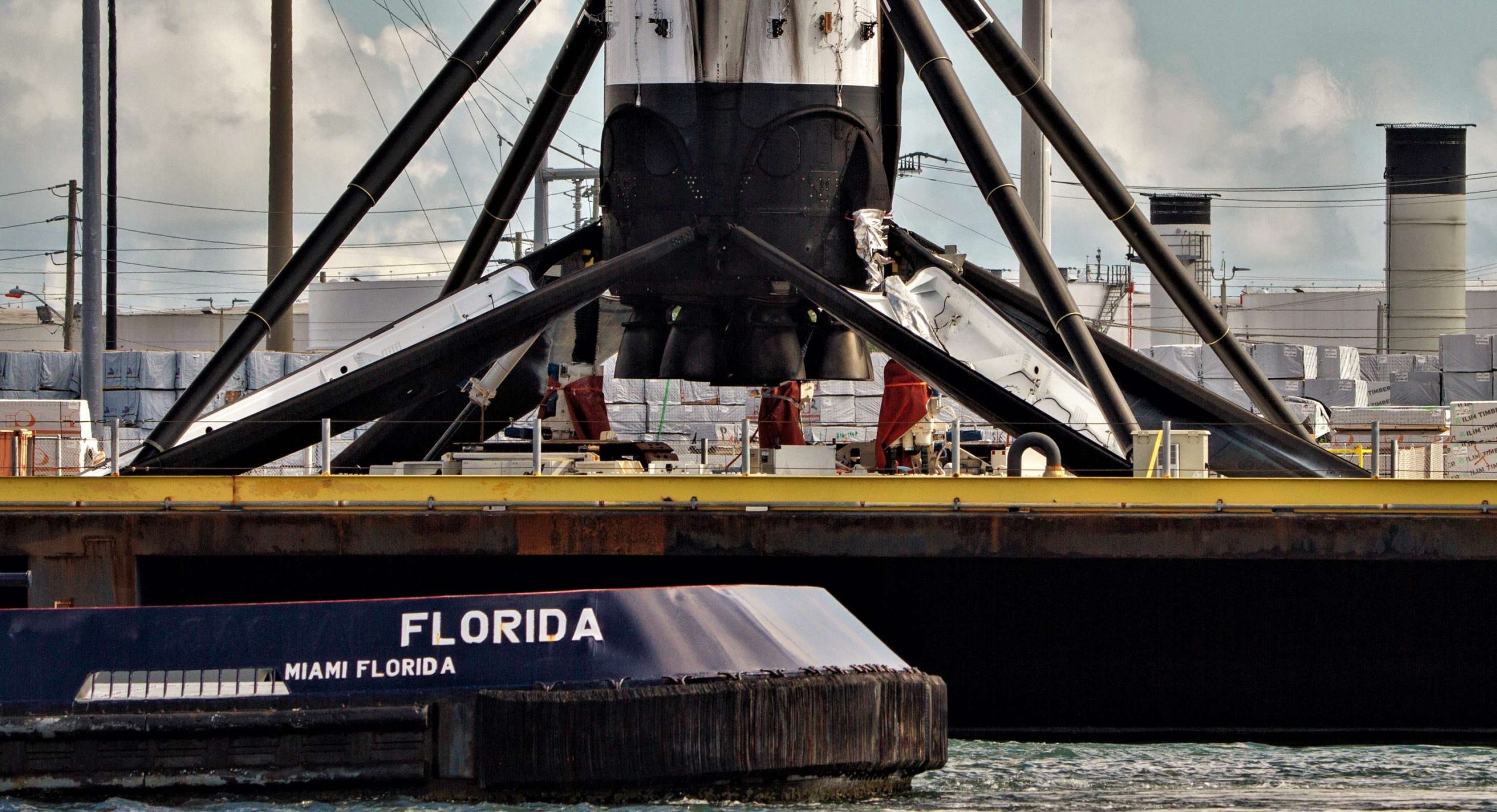
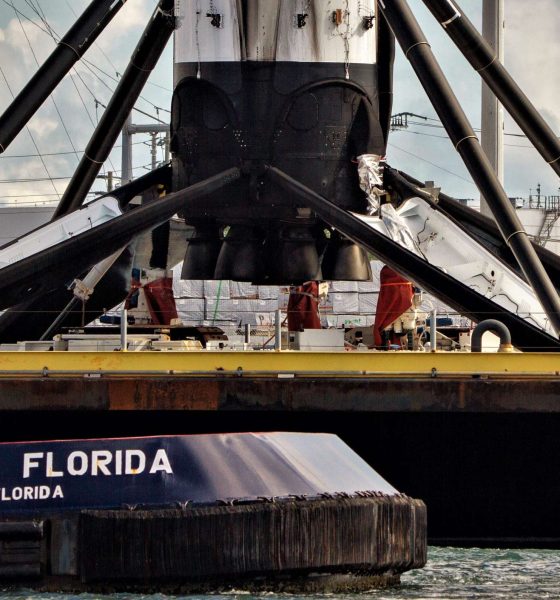
News
SpaceX Falcon 9 Block 5 booster sails into port aboard OCISLY after launch #2
SpaceX’s second Falcon 9 Block 5 booster, core B1047, has returned once more to Port Canaveral, Florida aboard drone ship Of Course I Still Love You (OCISLY) after a successful flight-proven launch, placing commercial communications satellite Es’hail-2 into a healthy, high-energy orbit.
SpaceX’s third reuse of a Block 5 booster since the upgraded Falcon 9 version’s May 2018 debut, the November 15 launch marks the company’s 11th mission to launch on a flight-proven rocket in 2018 alone, more than 60% of the 18 missions completed thus far.
As seen from Exploration Tower, #SpaceX #Falcon9 B1047.2 begins docking at Port Canaveral. pic.twitter.com/bDB83Va9Lg
— John Kraus (@johnkrausphotos) November 19, 2018
Prior to launching Es’hailsat’s Es’hail-2 satellite, Falcon 9 B1047 placed the massive ~7000 kg (15,500 lb) Telstar 19V communications satellite into orbit while also marking the second successful launch of Falcon 9’s Block 5 iteration. Nearly a new rocket, Block 5 focused on dramatically improving the reliability and reusability of the workhorse Falcon 9 rocket, ultimately translating into the total redesign and replacement of a large number of major subsystems.
The changes range from a totally new octaweb thrust structure (bolted, rather than welded, together), a clean-sweep upgrade of first and second stage avionics, new helium and nitrogen pressure vessels (COPVs), a total revamp of thermal protection for the interstage, legs, and octaweb, significantly refined Merlin 1D sea level and vacuum engines, Fairing 2.0, and much, much more. With the extensive changes brought by Block 5, SpaceX engineers strove to fully eradicate or at least cushion several unlikely but possible failure modes while also increasing the overall usable lifespan of particularly flight-critical, wear-intensive systems and components.
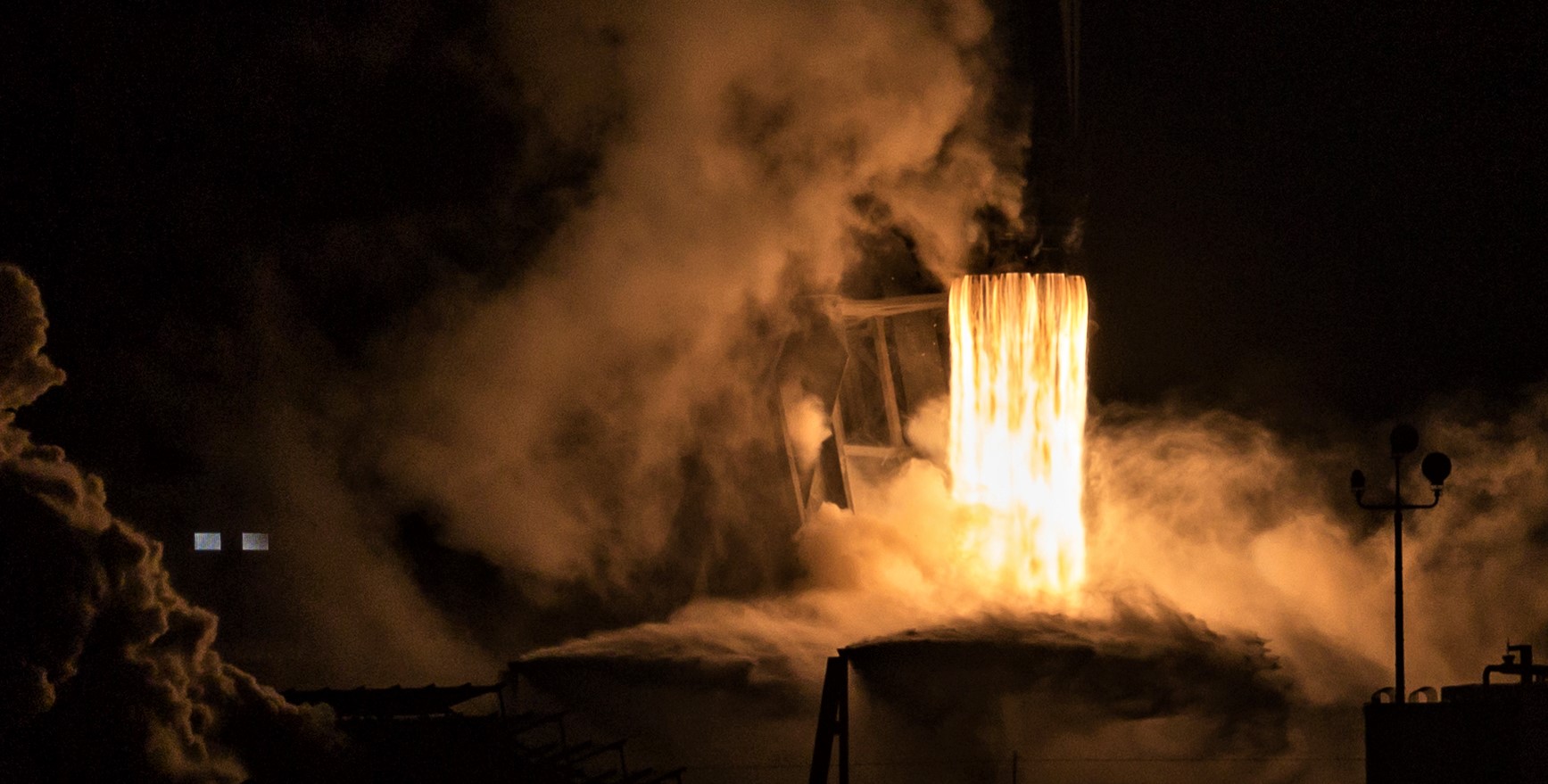
How many layers of soot?
Although it’s clear that some distance must still be covered before the specific goals of Block 5 can be realized, the aspiration of the design is to enable as many as 10 booster reuses with little more than thorough inspections between launches, and perhaps 100 or more launches per booster with more extensive maintenance and repairs every 10 or so launches.
The first unprecedented step in that direction – for Falcon 9 Block 5, at least – will be the third launch of a specific booster, a feat SpaceX was not willing to attempt before Block 5’s introduction. That milestone third launch was actually meant to occur on Monday, November 19 but has since been delayed to give SpaceX time to perform additional preflight inspections of Falcon 9, be it the twice-flown booster, the upper stage, the payload fairing, or all of the above.
The #SpaceX booster being moved into place at the dock in #PortCanaveral #Falcon9 pic.twitter.com/wdbwIRWeyh
— Tom (@Cygnusx112) November 19, 2018
Given just how critical a step the launch will be for SpaceX’s long-term goal of fielding rockets with aircraft-like reusability, caution is particularly key in this case, as any partial or total failure will almost instantly soil multi-flight Falcon 9 boosters in the eyes of a number of launch customers, potentially leading customers to request launches on boosters that have previously flown less than twice. Even then, a 5-7 day delay can be extremely unsavory for many customers, as time is very frequently money for satellite operators – a satellite on the ground is essentially a black hole that devours capital and generates zero revenue, sort of like a nuclear reactor that hasn’t been connected to the grid.
B1047’s successful return to port after a second operational launch will serve as another valuable wealth of data that can be used to further optimize SpaceX’s understanding of Falcon 9 Block 5 and its capabilities.

Elon Musk
SpaceX’s Starship FL launch site will witness scenes once reserved for sci-fi films
A Starship that launches from the Florida site could touch down on the same site years later.
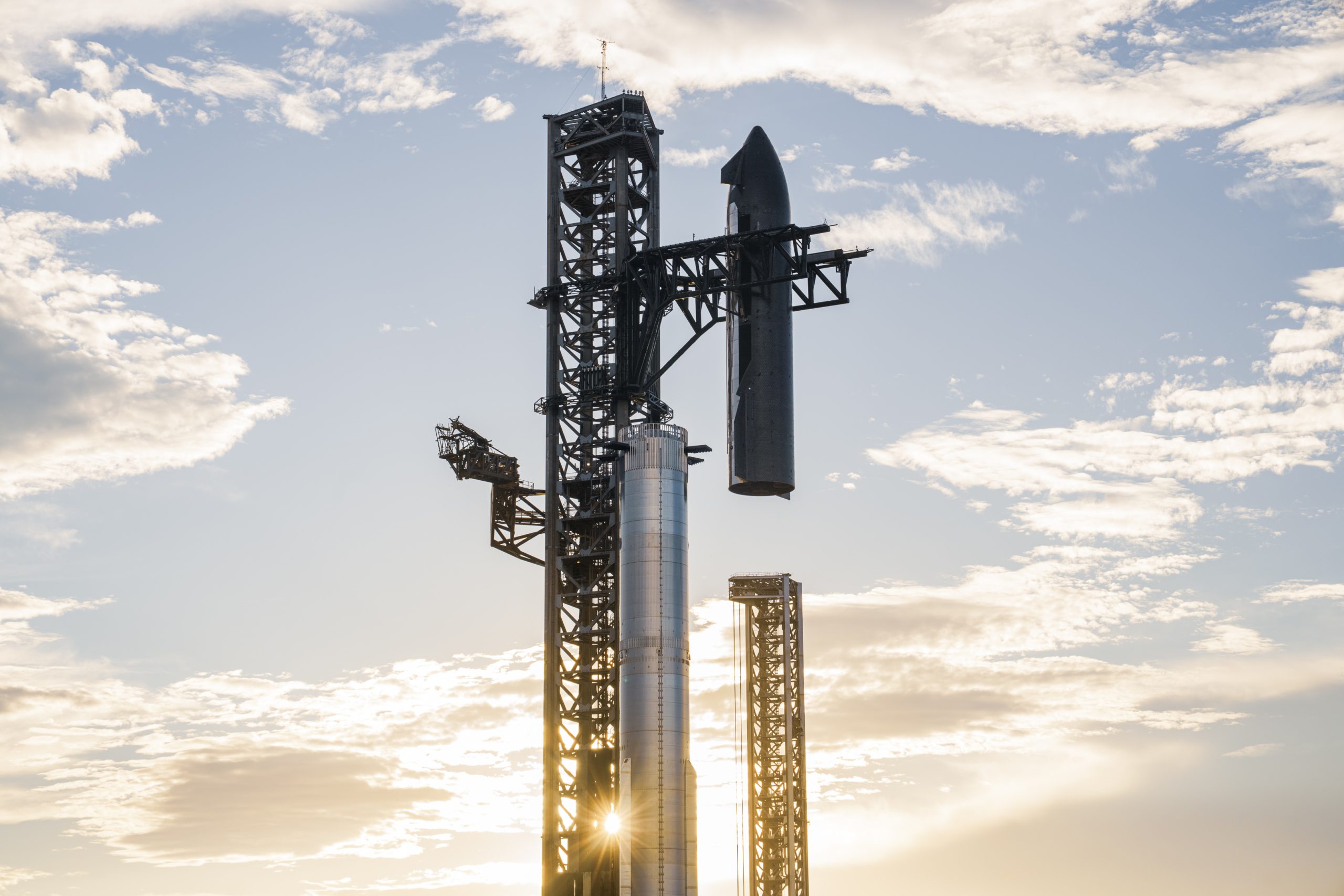
The Department of the Air Force (DAF) has released its Final Environmental Impact Statement for SpaceX’s efforts to launch and land Starship and its Super Heavy booster at Cape Canaveral Space Force Station’s SLC-37.
According to the Impact Statement, Starship could launch up to 76 times per year on the site, with Super Heavy boosters returning within minutes of liftoff and Starship upper stages landing back on the same pad in a timeframe that was once only possible in sci-fi movies.
Booster in Minutes, Ship in (possibly) years
The EIS explicitly referenced a never-before-seen operational concept: Super Heavy boosters will launch, reach orbit, and be caught by the tower chopsticks roughly seven minutes after liftoff. Meanwhile, the Starship upper stage will complete its mission, whether a short orbital test, lunar landing, or a multi-year Mars cargo run, and return to the exact same SLC-37 pad upon mission completion.
“The Super Heavy booster landings would occur within a few minutes of launch, while the Starship landings would occur upon completion of the Starship missions, which could last hours or years,” the EIS read.
This means a Starship that departs the Florida site in, say, 2027, could touch down on the same site in 2030 or later, right beside a brand-new stack preparing for its own journey, as noted in a Talk Of Titusville report. The 214-page document treats these multi-year round trips as standard procedure, effectively turning the location into one of the world’s first true interplanetary spaceports.
Noise and emissions flagged but deemed manageable
While the project received a clean bill of health overall, the EIS identified two areas requiring ongoing mitigation. Sonic booms from Super Heavy booster and Starship returns will cause significant community annoyance” particularly during nighttime operations, though structural damage is not expected. Nitrogen oxide emissions during launches will also exceed federal de minimis thresholds, prompting an adaptive management plan with real-time monitoring.
Other impacts, such as traffic, wildlife (including southeastern beach mouse and Florida scrub-jay), wetlands, and historic sites, were deemed manageable under existing permits and mitigation strategies. The Air Force is expected to issue its Record of Decision within weeks, followed by FAA concurrence, setting the stage for rapid redevelopment of the former site into a dual-tower Starship complex.
SpaceX Starship Environmental Impact Statement by Simon Alvarez
News
Tesla Full Self-Driving (FSD) testing gains major ground in Spain
Based on information posted by the Dirección General de Tráfico (DGT), it appears that Tesla is already busy testing FSD in the country.
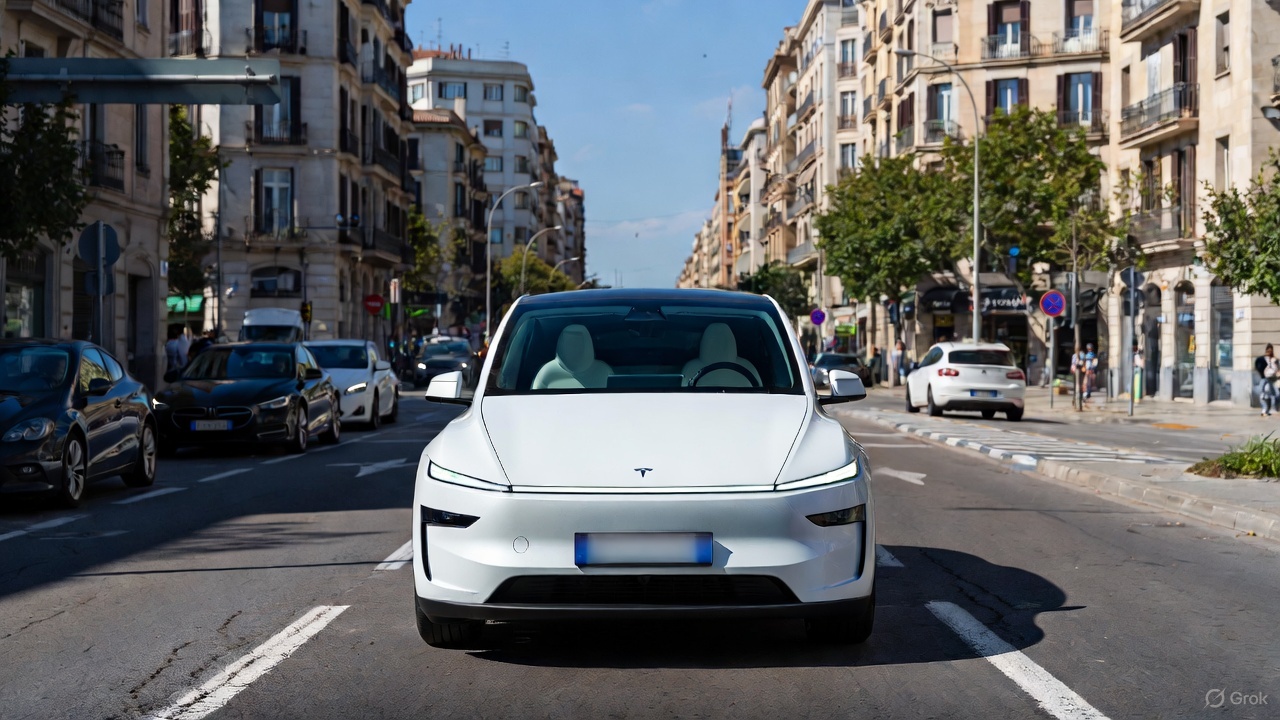
Tesla’s Full Self-Driving (Supervised) program is accelerating across Europe, with Spain emerging as a key testing hub under the country’s new ES-AV framework program.
Based on information posted by the Dirección General de Tráfico (DGT), it appears that Tesla is already busy testing FSD in the country.
Spain’s ES-AV framework
Spain’s DGT launched the ES-AV Program in July 2025 to standardize testing for automated vehicles from prototypes to pre-homologation stages. The DGT described the purpose of the program on its official website.
“The program is designed to complement and enhance oversight, regulation, research, and transparency efforts, as well as to support innovation and advancements in automotive technology and industry. This framework also aims to capitalize on the opportunity to position Spain as a pioneer and leader in automated vehicle technology, seeking to provide solutions that help overcome or alleviate certain shortcomings or negative externalities of the current transportation system,” the DGT wrote.
The program identifies three testing phases based on technological maturity and the scope of a company’s operations. Each phase has a set of minimum eligibility requirements, and applicants must indicate which phase they wish to participate in, at least based on their specific technological development.
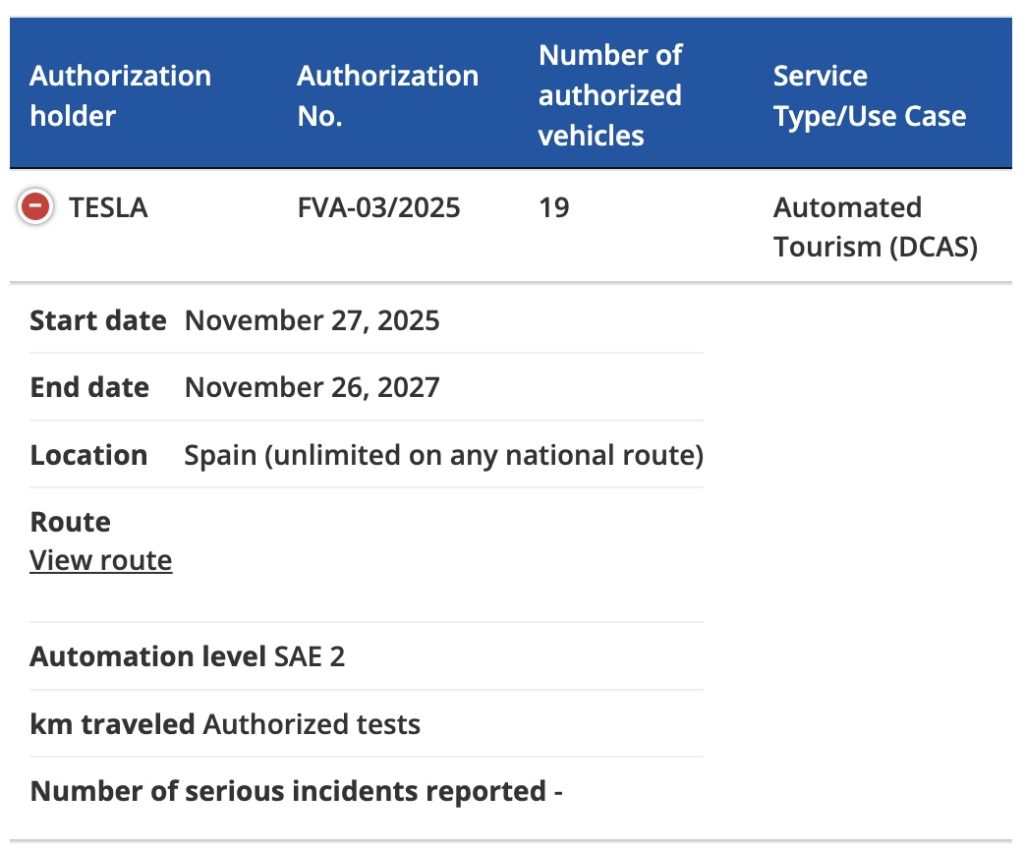
Tesla FSD tests
As noted by Tesla watcher Kees Roelandschap on X, the DGT’s new framework effectively gives the green flight for nationwide FSD testing. So far, Tesla Spain has a total of 19 vehicles authorized to test FSD on the country’s roads, though it would not be surprising if this fleet grows in the coming months.
The start date for the program is listed at November 27, 2025 to November 26, 2027. The DGT also noted that unlimited FSD tests could be done across Spain on any national route. And since Tesla is already in Phase 3 of the ES-AV Program, onboard safety operators are optional. Remote monitoring would also be allowed.
Tesla’s FSD tests in Spain could help the company gain a lot of real-world data on the country’s roads. Considering the scope of tests that are allowed for the electric vehicle maker, it seems like Spain would be one of the European countries that would be friendly to FSD’s operations. So far, Tesla’s FSD push in Europe is notable, with the company holding FSD demonstrations in Germany, France, and Italy. Tesla is also pushing for national approval in the Netherlands in early 2026.
News
Tesla FSD V14.2.1 is earning rave reviews from users in diverse conditions
Tesla’s Full Self-Driving (Supervised) software continues its rapid evolution, with the latest V14.2.1 update drawing widespread praise.
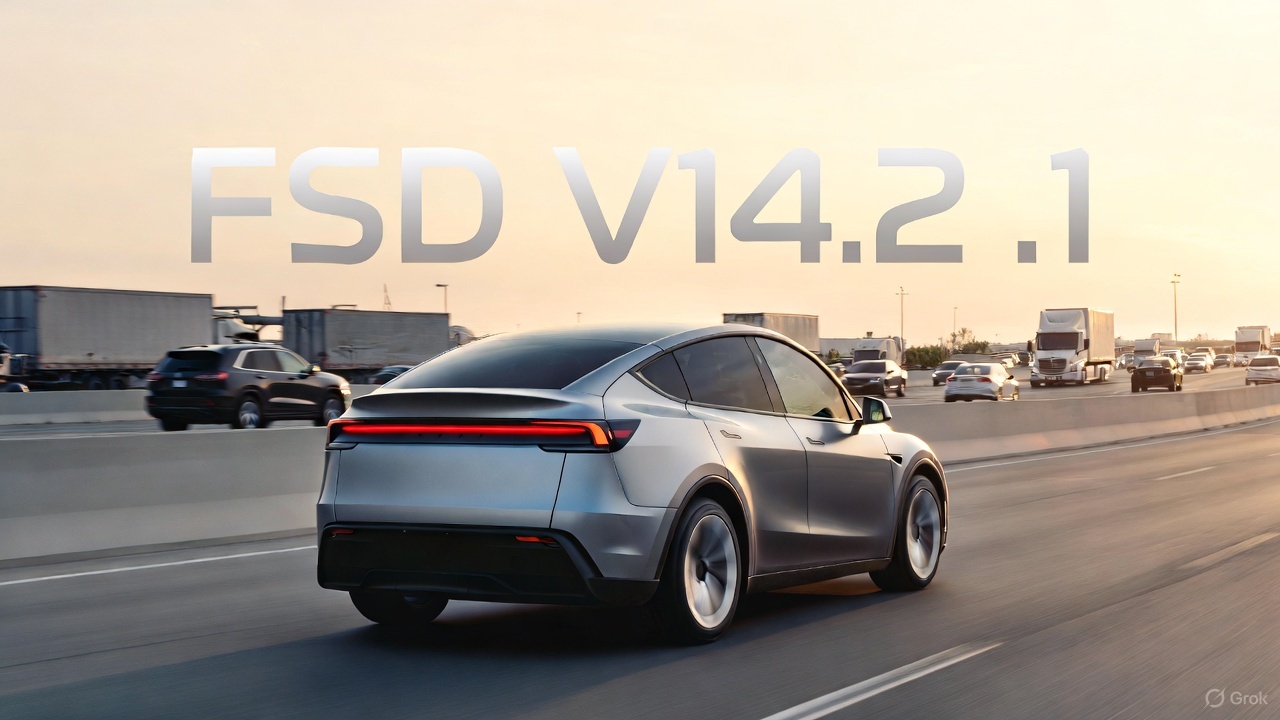
Tesla’s Full Self-Driving (Supervised) software continues its rapid evolution, with the latest V14.2.1 update drawing widespread praise for its smoother performance and smarter decision-making.
Videos and firsthand accounts from Tesla owners highlight V14.2.1 as an update that improves navigation responsiveness, sign recognition, and overall fluidity, among other things. Some drivers have even described it as “more alive than ever,” hinting at the system eventually feeling “sentient,” as Elon Musk has predicted.
FSD V14.2.1 first impressions
Early adopters are buzzing about how V14.2.1 feels less intrusive while staying vigilant. In a post shared on X, Tesla owner @LactoseLunatic described the update as a “huge leap forward,” adding that the system remains “incredibly assertive but still safe.”
Another Tesla driver, Devin Olsenn, who logged ~600 km on V14.2.1, reported no safety disengagements, with the car feeling “more alive than ever.” The Tesla owner noted that his wife now defaults to using FSD V14, as the system is already very smooth and refined.
Adverse weather and regulatory zones are testing grounds where V14.2.1 shines, at least according to testers in snow areas. Tesla watcher Sawyer Merritt shared a video of his first snowy drive on unplowed rural roads in New Hampshire, where FSD did great and erred on the side of caution. As per Merritt, FSD V14.2.1 was “extra cautious” but it performed well overall.
Sign recognition and freeway prowess
Sign recognition also seemed to show improvements with FSD V14.2.1. Longtime FSD tester Chuck Cook highlighted a clip from his upcoming first-impressions video, showcasing improved school zone behavior. “I think it read the signs better,” he observed, though in standard mode, it didn’t fully drop to 15 mph within the short timeframe. This nuance points to V14.2.1’s growing awareness of temporal rules, a step toward fewer false positives in dynamic environments.
FSD V14.2.1 also seems to excel in high-stress highway scenarios. Fellow FSD tester @BLKMDL3 posted a video of FSD V14.2.1 managing a multi-lane freeway closure due to a police chase-related accident. “Perfectly handles all lanes of the freeway merging into one,” the Tesla owner noted in his post on X.
FSD V14.2.1 was released on Thanksgiving, much to the pleasant surprise of Tesla owners. The update’s release notes are almost identical to the system’s previous iteration, save for one line item read, “Camera visibility can lead to increased attention monitoring sensitivity.”









